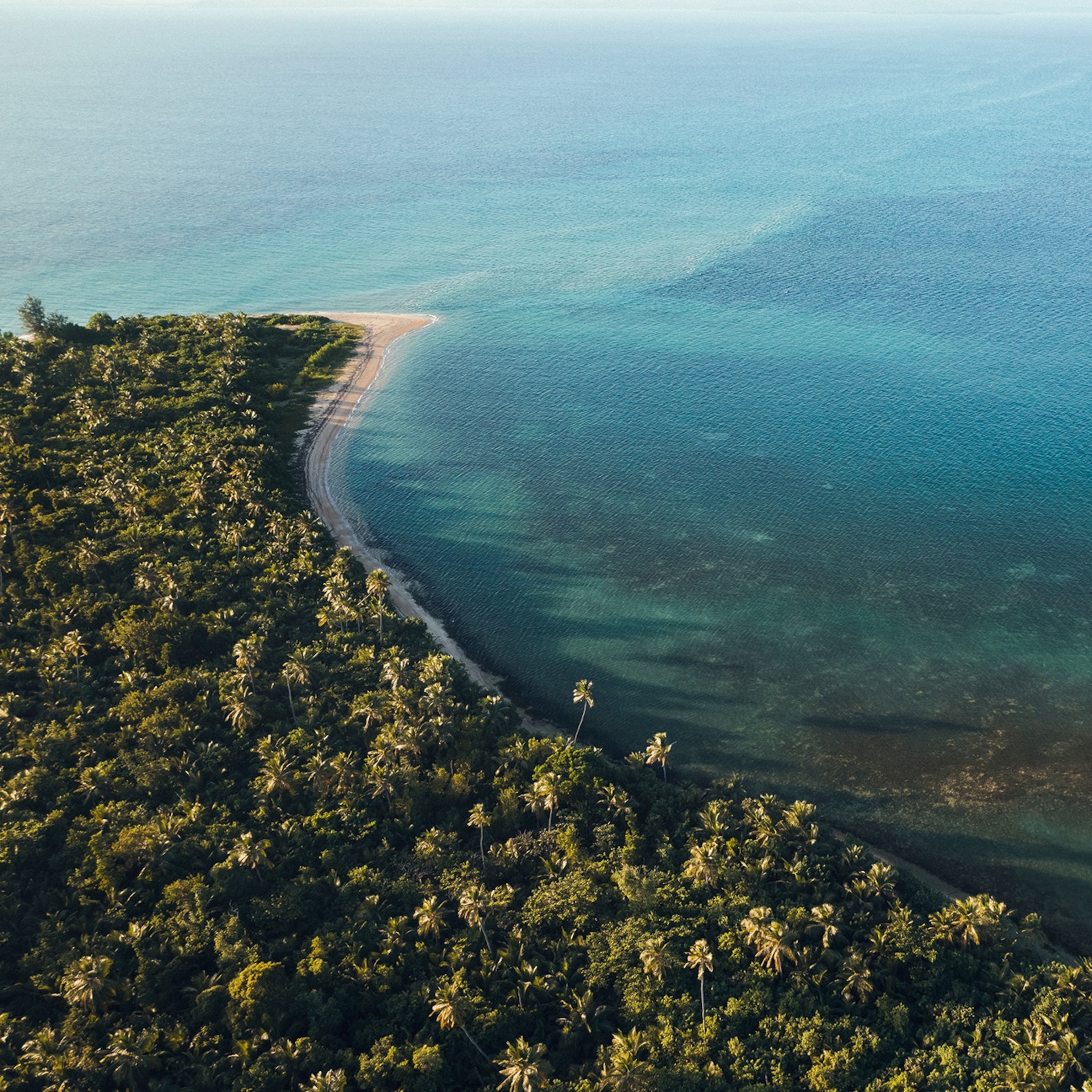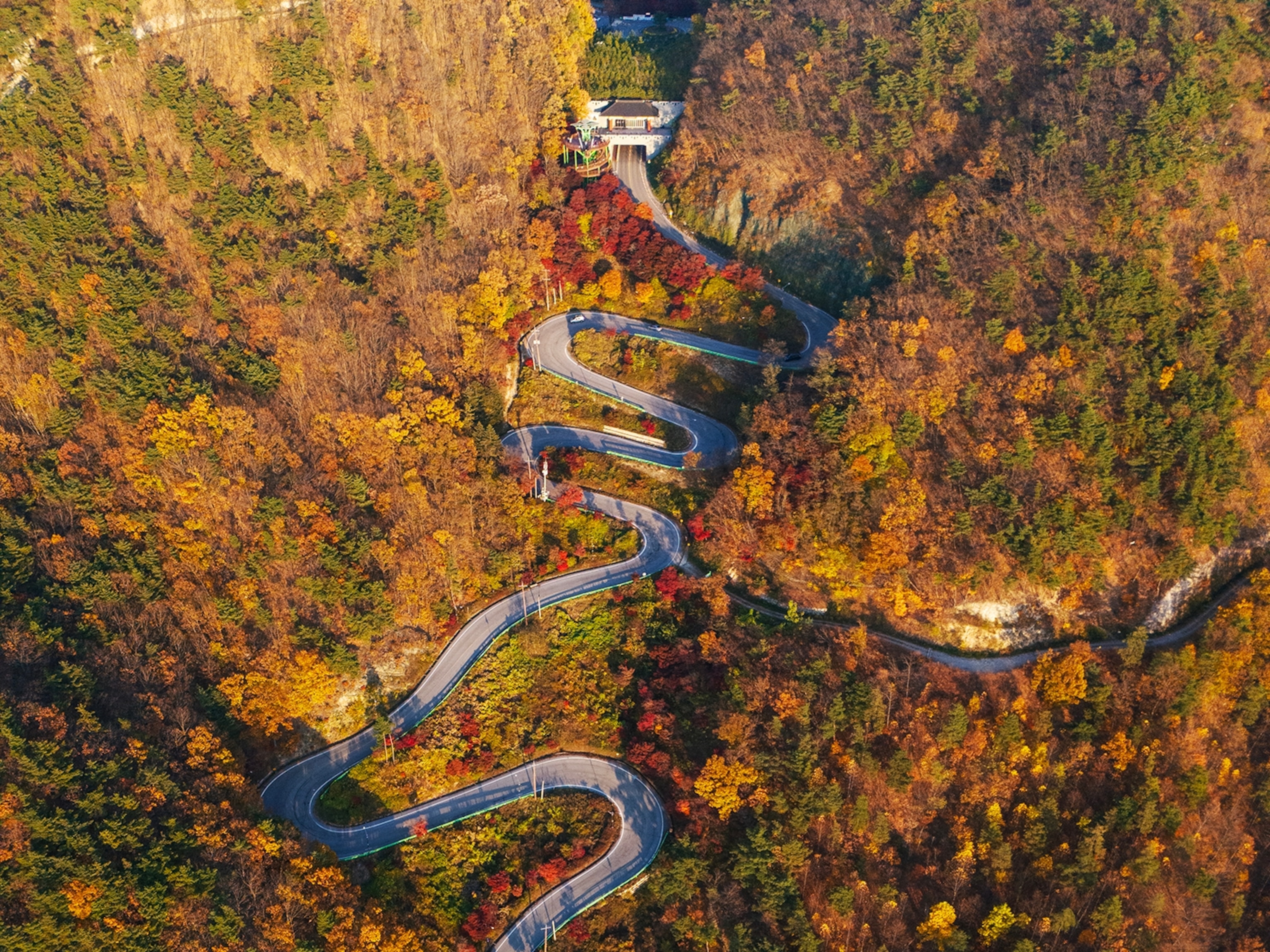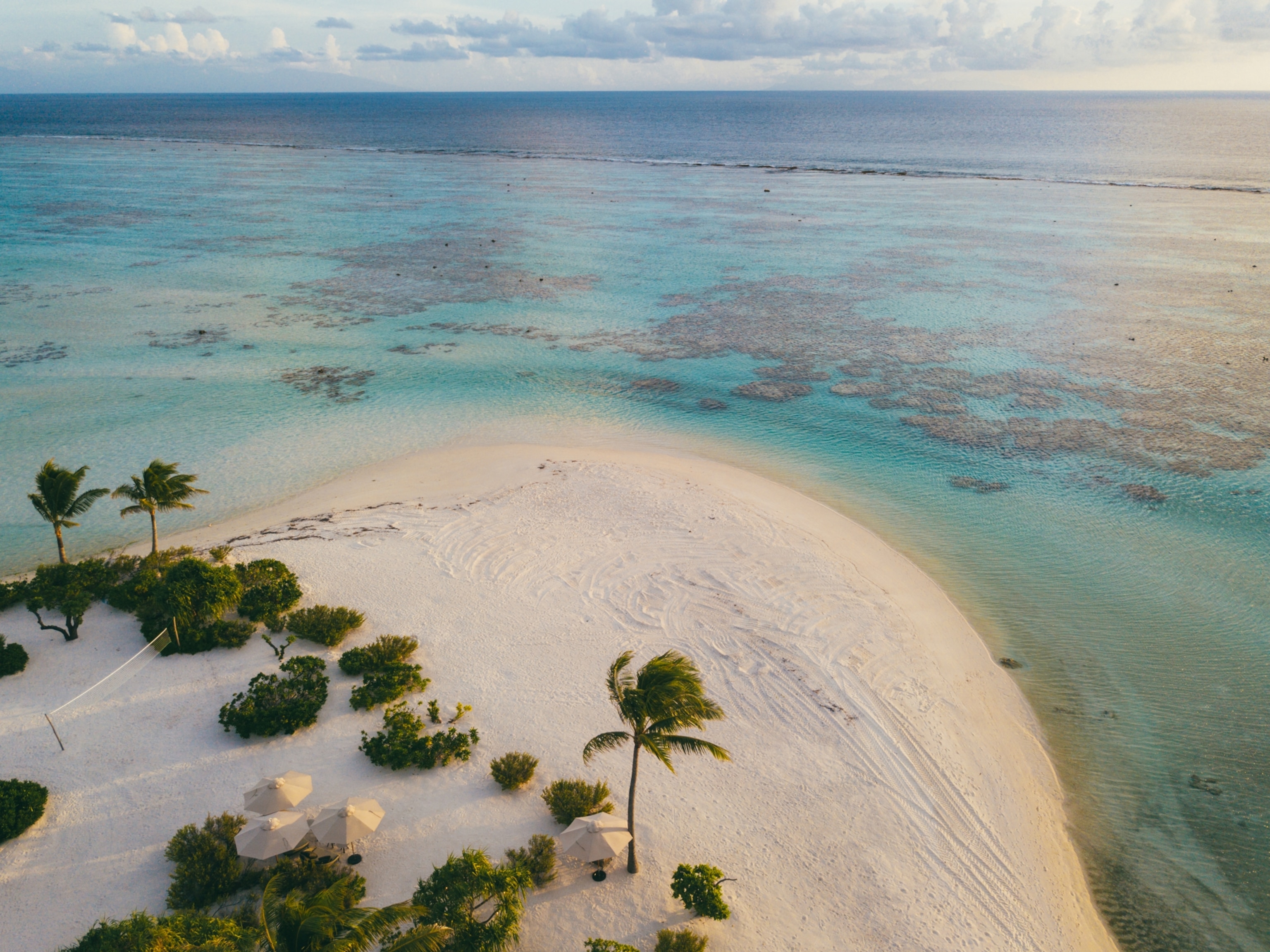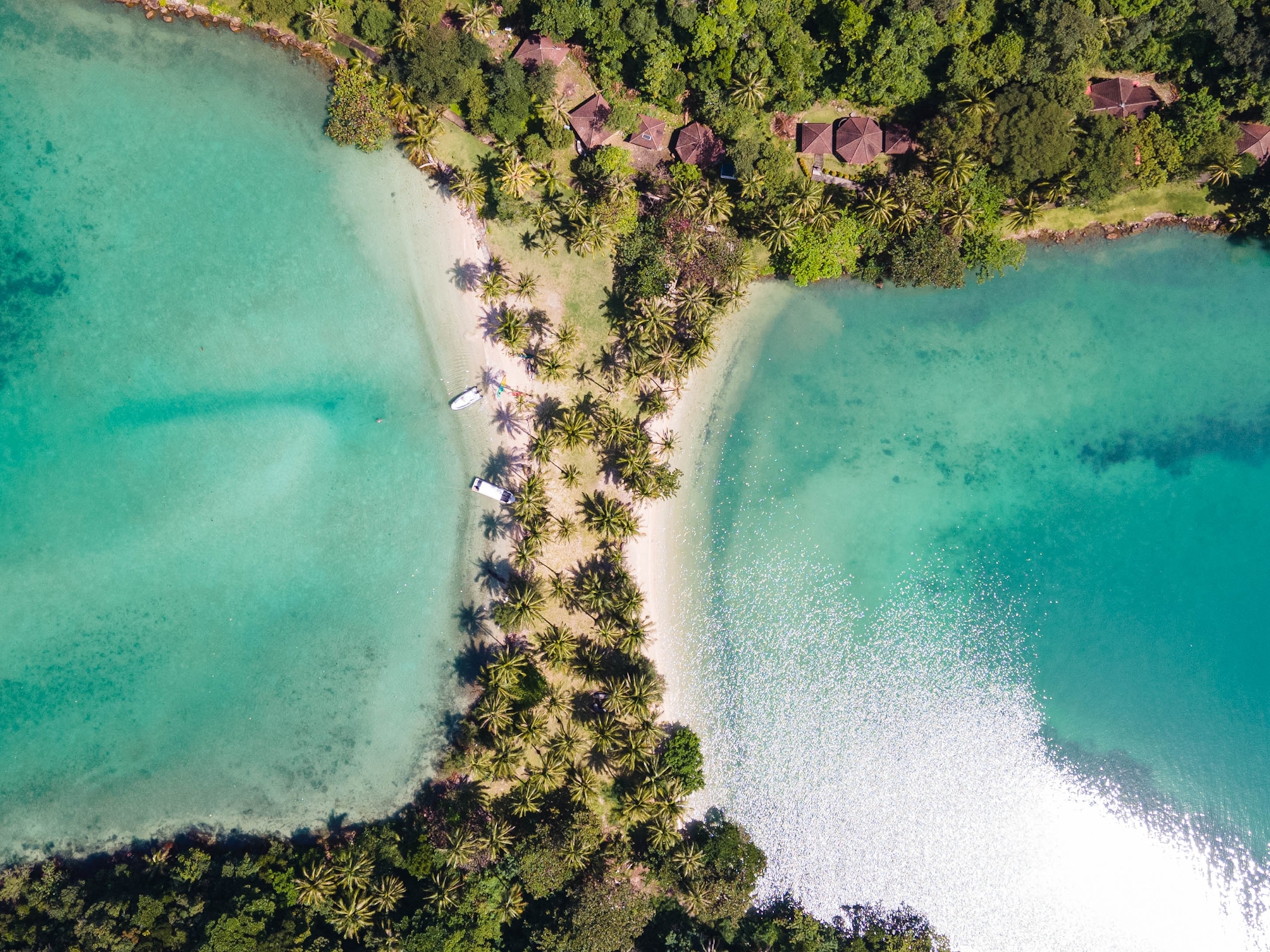
This is the Caribbean Paradise for Rum
Imagine a Caribbean nation where village church steeples mingle with palm trees, the scent of baking croissants melds with that of passion fruit, and the island’s liquid soul—rum—is spelled with an h.
I’m not sure what I was expecting when my plane landed in Fort-de-France, Martinique’s capital. In retrospect, the word “France” in the city’s name should have been a giveaway. Yet I was strangely confused. Pharmacie? Bar-tabac? Where am I?
It really hit me the next evening, as I sat sipping a kir in Trois-Ilets, an idyllic beach vacation spot across the bay from Fort-de-France, surrounded by well-behaved French vacationers tucking into foie gras au rhum.
The island’s colonial past (the first French settlers came in 1635) and multicultural present (slavery was finally abolished here in 1848) lend a whiff of tension, especially when you know much of its economy continues to be controlled by a handful of békés, white descendants of Martinique’s original ruling class.
Since Martinique is the equivalent of a French state (it is part of the European Union), it benefits from French-level infrastructure and education. Still, you can’t miss the island’s unique and bright melting-pot culture, from the local Creole patois and colorful madras in the marketplaces to the piment-laced food and local biguine music.
1. Travel La Route des Rhums.
“The history of rum made the history of Martinique,” Michel Fayad told our group at the Saint James Distillery & Rum Museum. As we walked through the old distillery, with its world-class collection of gleaming vintage copper stills, his words came to life. A granddaddy of island rum, Saint James was founded in 1765, as sugar cane cultivation flourished on Martinique. Africans, who undergirded the lucrative sugar industry as slaves and then as field workers, gave birth to the island’s Creole culture, when whites and blacks and, later, Indians, intermixed.
“Martinique’s rum, called rhum agricole, is special because it’s made from pressed sugar cane,” Fayad explained. “Mass-produced rum is made from molasses, which is a sugar-cane byproduct,” he added, with a dismissive wrinkle of his nose.
Unsurprisingly, our thirsty group declined to ride the vintage train ride into the sugar cane fields. Instead, we headed directly to the long wooden bar in the plantation’s gingerbread-trimmed main house. Under whirring ceiling fans, we tested light, amber, and dark aged rum. Mr. Fayad, undoubtedly recognizing a good pupil, even made me a ‘ti punch, the French Caribbean’s go-to rum-based aperitif. Vive la Martinique!
Other distilleries dot the island, but the roads are winding and full of switchbacks, so it’s best to pace your visits. For lunch, head to the Depaz Distillery, where a windmill has been converted into a breezy hilltop restaurant with amazing views of the Caribbean Sea serving up Creole specialties like boudin blanc, a seasonal sausage made with fish and local crayfish.
Finally, the contemporary sculptures set against fields of rustling sugar cane on Habitation Clément‘s 17 tree-shaded acres make for a unique experience…and the distillery visit rivals that of the finest French wineries.
2. Visit Fort-de-France.
When I’m visiting a tropical island, I like to rub shoulders with real locals and not simply long-suffering resort employees who are paid to be nice. I found the old downtown area of Fort-de-France a relaxing place to spend a couple of hours, and easy to navigate on foot. The lively streets are lined with two-story shop houses sporting painted shutters and wrought-iron balconies. There’s also plenty of one of my favorite architectural features: wooden gingerbread trim.
Don’t get me wrong, though. The city is not at all cute. It’s a living, breathing place where one-third of the island’s population converges daily, so best avoid roads during rush hour. Oh, and yes, there is a huge fort, dating from 1672, atop a grassy hillock overlooking the bay, looming and easy to visit.
The city came into its own after Mount Pelée erupted in 1902, burying the former capital, called Saint-Pierre, and forcing most surviving residents to move to Fort-de-France. Perhaps that’s why I sensed a Belle Époque élan running through many buildings in town, including the historic Schoelcher Library. The ornate metal-and-glass structure—a quirky pastiche of Egyptian, Byzantine, and art nouveau influences built in Paris in 1889, then reassembled in Fort-de-France—is home to thousands of books belonging to 19th-century abolitionist Victor Schoelcher, the Abraham Lincoln of the French Antilles.
I would have liked to have spent more time exploring the five-story Hotel L’Impératrice, across from la Savanne, the town’s main public square. The first building on the island to have an elevator when it was finished in 1955, the hotel seems frozen in time—especially its sleepy lobby with dark wicker, fern-meets-palm-tree décor, and brown-and-beige cement tiled floor.
Unfortunately I had to cut my exploration of the city short due to a predicted afternoon shower. To cut my losses, I decided to head to Fort-de-France’s covered market for some souvenir shopping. With help from a wizened, tooth-challenged gentleman, I made it there just in time to hear the roar of rain on the turn-of-the-century metal roof and browse for handmade madras clothes, “Colombo” curry powder, and small-batch coconut-rum punch at the jumble of stalls in the cavernous building.
3. While away the afternoon in paradise.
I don’t use the word paradise lightly, but travelers who take the time to visit historic Habitation Céron will find a peaceful tropical heaven, thanks to the sheer will and impeccable taste of current owner Laurence Marraud des Grottes, who has given her family’s 17th-century sugar plantation new life as a eco-chic day-trip destination and cocoa farm supplying high-end Martiniqueaise chocolaterie, Lauzéa.
“The only way to preserve our history and tradition is to open this place to the public,” Laurence told me as we dined al fresco next to the Céron River, which flows down from Mount Pelée and once provided energy to turn the sugar mill wheel on the plantation. “We’ve done a lot to enhance the environment here, like labeling the tropical plant species and building a nature trail through the jungle to our 300-year-old Zamana tree, which was in the running for most beautiful tree in France,” she said. “Some guests,” she added, reading my mind, “like to take a siesta by the river after lunch.”
- National Geographic Expeditions
Napping was not in the cards, though, even after filling up on locally sourced specialties like freshly baked banana chips (from the plantation’s trees), sesame-crusted tuna, and saffron rice. Not to mention the café gourmand: essentially, a very French excuse to gobble a bite-size serving of each dessert under the guise of ordering coffee.
In the end, I didn’t take that siesta, nor swim in the river, visit the cocoa plantation, or hike any of the Mount Pelée trails that converge on the property. But I’m proud to say I did circumambulate the gigantic, three-century-old Zamana tree. With branches that span the equivalent of a city block, it’s a tropical tree of life.
4. Get out on the water.
Since Martinique is one of the best places for sailing in the Lesser Antilles, it’s wise to get on the water at least once. An ideal opportunity is an excursion to an idyllic sandbar called La Baignoire de Joséphine (Josephine’s bathtub, named for Empress Joséphine, Napoleon’s first wife, who hailed from Martinique) near the posh town of Le François.
You can kayak out to the sandbar, but the fastest option is to hop a local boat from the marina, arranged in advance by your hotel or guesthouse. From there, it’s about a mile out to a swath of pillow-soft white sand where the boats drop anchor in between two little islands and let their giddy passengers splash around in the waist-deep water like kids on the first day of summer vacation.
I doubt the empress ever bathed there, but even so, I felt somewhat like royalty. If royalty wears bikinis. And sips from a small plastic goblet of rum punch provided by their boat captain, that is. Because it’s always five o’clock when you’re on vacation in France, even far from the motherland. I had successfully and fully assimilated to the easygoing take on France in the tropics. As they say in the local Creole language: Pa ni problem.
Ceil Miller Bouchet is a freelance travel writer based in Chicagoland. Follow her on Twitter and Instagram @CeilBouchet.







